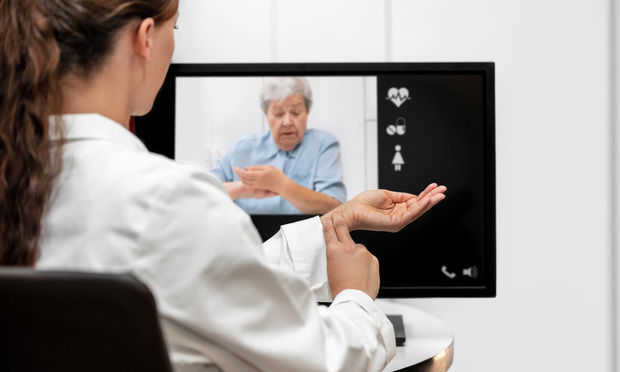Telehealth claims take a substantial leap in the COVID-19 era
Growth of telehealth medical claims have been most pronounced in the Northeast.

As the COVID-19 outbreak continues unabated, people are ever warier of spending time in places with the potential of greater risks of exposure, like doctors’ offices. Telehealth has quickly become a popular way to prevent that risk, and a new study shows just how popular an option it is.
According to FAIR Health’s Monthly Telehealth Regional Tracker, telehealth claim lines increased from 0.15% of medical claim lines in April 2019 to 13% in April 2020. That amounts to an increase of 8,336% nationally, the report says.
Related: 4 tips for employers as telehealth use grows
The upward trend began in March 2020, when the World Health Organization declared the outbreak a pandemic, causing businesses and schools across the country to close. The percent growth from March 2019 to March 2020 was 4,347%, nearly doubling in April 2020.
The trend comes as no surprise to experts. Because telehealth doesn’t require person-to-person contact and results in freeing up in-person health care resources for COVID-19 patients, federal and state regulations related to telehealth were relaxed. Private payors also expanded access to telehealth.
Growth of telehealth medical claims was most pronounced in the Northeast. Claim lines increased from 0.07% of medical claim lines in April 2019 to 19.69% in April 2020, amounting to a growth of 26,209%. The Northeast had already seen a significant increase in claims from March 2019 to March 2020, at 15,503% growth.
Although none of the other U.S. census regions saw the kind of surge as in the Northeast, there was still considerable escalation of telehealth claim lines across the rest of the country. In the South, the increase as a percentage of medical claim lines was 6,039 percent; in the Midwest, 6,754 percent; and in the West, 3,967 percent.
With the exception of the Midwest, urban areas had a greater share of telehealth claim lines than rural areas in April 2019 and April 2020. The Midwest saw a greater share of telehealth claim lines in rural areas for April 2019, with the greater percentage shifting to urban areas in April 2020.
The report also suggests other trends regarding the top five telehealth diagnoses. Hypertension, for example, became the number three diagnosis nationally in April 2020, advancing from number four in March 2020. Increased telemonitoring of hypertension patients and increased pandemic-induced stress may account for the rise. Additionally, the Midwest saw diabetes mellitus become one of the top five diagnoses in April 2020. The condition did not appear in the top five in April 2019. With in-person care less accessible during the pandemic, telehealth may have been used to treat chronic conditions as well as acute ones.
Mental health conditions led the top five diagnoses in every region in April 2019 except the South, where acute respiratory diseases and infections took the top spot. In April 2020, mental health conditions decreased from 40.10% to 35.34% in the Northeast, and from 71.65% to 35.27% in the West. Mental health conditions increased from 34.65% to 43.41% in the Midwest in April 2020, and from 16.77% to 26.88% in the South. Acute respiratory disease and infection diagnoses fell in the South from 28.81% in April 2019 to 4.21% in April 2020.
Read more:


